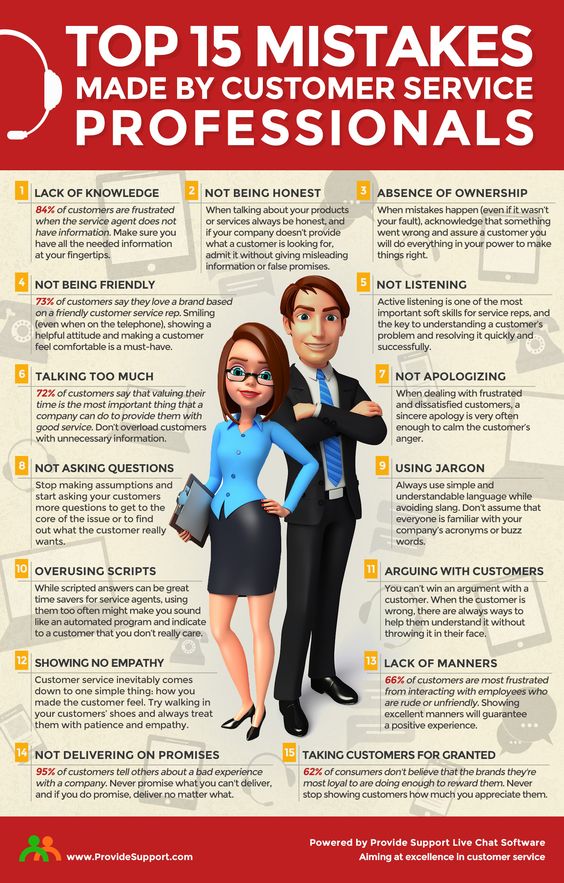It's no wonder that I own a company that evaluates service performance as one of our main jobs. Service delivery has always held my interest. I am simply unable to have a service encounter without completing my mental check list of, "Did right, and/or did wrong" evaluation. Here is a great quote by Bill Gates that all businesses should have their eye on and thrive on:

Like all of you, my summer months have been full of service exchanges with a variety of businesses. As I read the info-graphic shown below powered by Provide Support Live Chat Software, I realized that I pretty much encountered each of these mistakes during the last couple of months. Pretty sad, right?
All 15 mistakes beg attention, but here are my top picks that seem to have a high percentage of violation and without question, bad outcomes.
- Which is their #1, lack of knowledge. When you are seeking information to either educate yourself or to enhance an experience, the last thing you need is someone who clearly does not know, or can't seem to find, the answers to the questions you ask.
- Not being friendly and lack of manners are two of the biggest mistakes that hold a very high percentage of problems for any business. 73% select a brand based on friendly service with smiling associates. 66% get frustrated with a business whose associates are rude and unfriendly. My frustration is how this is even allowed to happen as often as it does.
- Not showing active listening skills creates more problems! You can't deliver on what you didn't hear.
- Not delivering on promises. The statistic alone should get everyone's attention ~ 95% will tell others about a bad experience with a company.
So instead of just reading this these facts, I would like to challenge each of you to take these 15 mistakes and make them your company focus. Each week, train, discuss, and role play each to ensure your business eliminates these behaviors. Great service delivery is about knowing what is expected and understanding what great service looks like in action. Anything else is left up to the employees interpretation.



